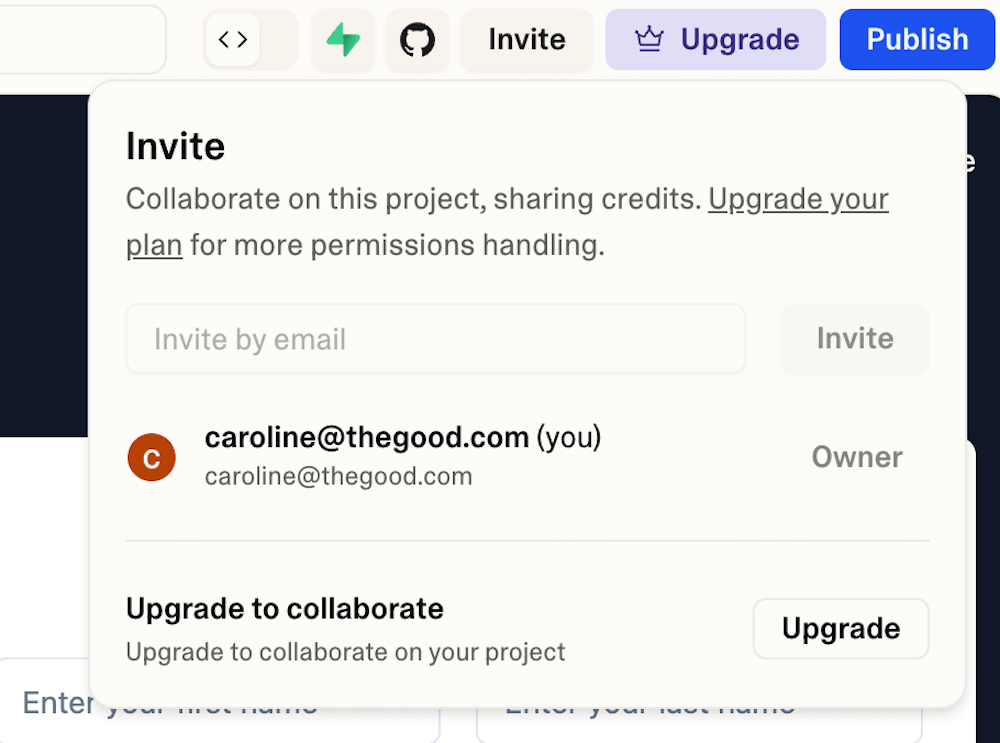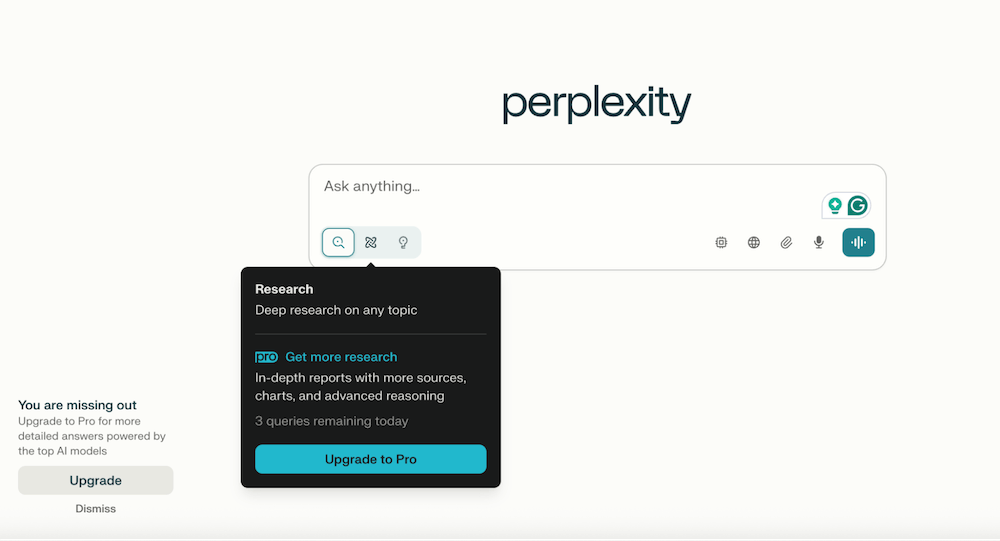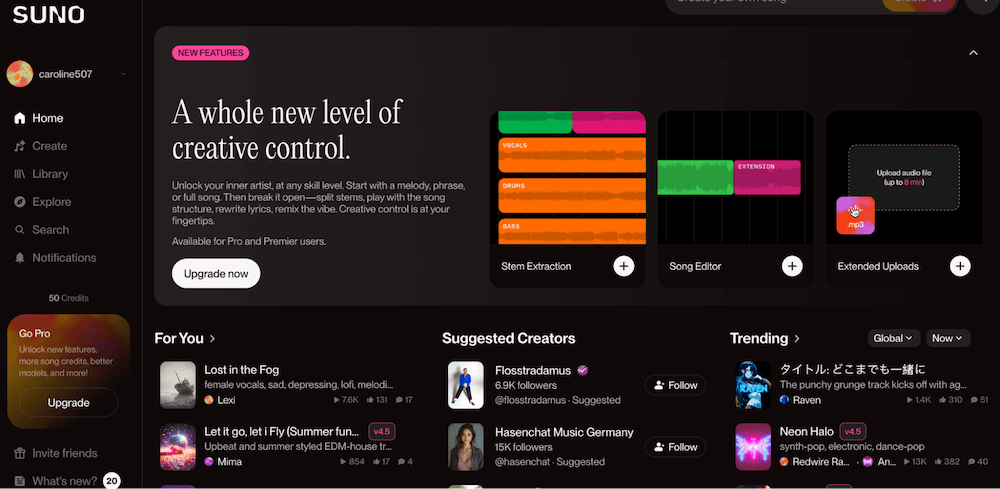
Conversion-Centered Design: 7 Principles That Drive SaaS Upgrades
Transform every touchpoint into a revenue opportunity with strategic design that guides users through complex upgrade decisions.
Let’s be honest about the SaaS upgrade challenge: you’re not just converting free users to paid accounts anymore. Today’s SaaS landscape includes freemium-to-premium transitions, plan upgrades, feature unlocks, usage-based expansions, and a dozen other monetization moments. Each represents a different psychological decision with unique friction points.
Most SaaS companies approach these upgrade opportunities with the same basic playbook: add an “Upgrade Now” button and hope for the best. But the companies exceeding their conversion goals understand something different: every upgrade scenario requires its own conversion-centered design strategy.
What is conversion-centered design?
Conversion-centered design is the practice of building digital experiences by making design decisions that serve a specific conversion goal. Unlike traditional user experience design, which prioritizes general usability and user satisfaction, conversion-centered design focuses on guiding users toward specific actions through strategic design choices.
In the case of SaaS upgrades, it’s about understanding the user behavior behind different types of SaaS upgrade decisions and crafting experiences that remove friction at precisely the right moments.
Beyond free-to-paid: the full spectrum of SaaS upgrades
Before we dive into design principles, let’s map the actual upgrade landscape most SaaS companies navigate:
Free trial to paid subscription
Free trial to paid subscription is the classic conversion challenge, where users evaluate whether your product delivers enough value to justify ongoing payment. Users typically weigh their decision based on factors such as feature completeness, onboarding success, and competitive alternatives.
Freemium to premium plans
In a transition from freemium to premium plans, users already love your basic offering, but need to justify paying for advanced features. This involves different psychology than trial conversions. You’re asking satisfied users to spend money, not preventing churn.
Plan tier upgrades
In tiered pricing plans, existing customers hit limits or need additional capabilities when considering an upgrade. These users are already paying, so the decision typically involves budget approval and feature value demonstration, rather than product evaluation.
Usage-based expansions
When customers exceed included allowances for API calls, storage, or monthly active users, they will often consider a usage-based upgrade. The decision here is often reactive rather than strategic, requiring different messaging and strategy.
Feature unlock purchases
In this scenario, individual premium features are available for one-time purchase rather than as part of a plan upgrade. Examples include advanced reporting, integrations, or compliance features sold separately.
Seat-based growth
In order to get tool access for the whole team, a user may need to purchase additional user licenses or a team account. This decision involves both the original user and new team members, creating complex decision dynamics.
Annual vs. monthly billing
Convincing users to commit to longer-term contracts for discounts is tricky. This upgrade isn’t about features, it’s about cash flow and commitment.
Each of these scenarios requires a different conversion approach because the user psychology, decision-making process, and friction points vary significantly. Let’s explore how conversion-centered design principles adapt to these diverse upgrade contexts.
Enjoying this article?
Subscribe to our newsletter, Good Question, to get insights like this sent straight to your inbox.
The 7 principles of conversion-centered design for SaaS upgrades
Principle 1: Context-driven focus
Traditional conversion design emphasizes “creating focus” around the action you are leading users towards. In SaaS applications, that focus must be contextual. A user who has reached their storage limit requires a different focus than someone exploring premium features during onboarding.
How this works in practice:
For usage-based upgrades, focus should be immediate and solution-oriented: “You’re running low on API calls. Upgrade now to avoid service interruption.” Remove all other navigation options and make the upgrade path the primary action.
For feature exploration, focus should demonstrate value: “See how advanced analytics helped Acme Corp increase conversions by 34%.” Here, you can include secondary actions like “Learn More” or “See Example Report” because the user isn’t facing immediate urgency.
The key is recognizing where users are in their usage journey and matching your design focus to their mental state.
Here is a good example from Lovable. After creating a design, when you attempt to share it with your team, you are contextually prompted to “upgrade to collaborate.”

Principle 2: Progressive value architecture
Instead of dumping all premium features on users at once, structure your upgrade experience to build conviction progressively. This principle is especially important for complex SaaS products with multiple upgrade paths.
How this works in practice:
Design upgrade flows that reveal features progressively based on user engagement rather than showing everything upfront. Track which users click “Learn More” vs “Upgrade Now” to understand where additional information helps vs. hurts conversion. To implement, you can consider an upgrade architecture like:
Level 1: Immediate benefit
Lead with the single most compelling reason to upgrade based on the user’s current context. If they’re hitting usage limits, start with expanded capacity. If they’re in a specific workflow, highlight features that enhance that workflow.
Level 2: Supporting benefits
Once users engage with the primary benefit, introduce 2-3 supporting features that reinforce the upgrade decision. These should be directly related to their demonstrated usage patterns.
Level 3: Full feature set
Only after users show continued interest should you present comprehensive feature comparisons. Most users never need to see this level; they convert based on the immediate benefit alone.
Principle 3: Consistency across touchpoints
SaaS upgrades happen across multiple touchpoints, like in-app prompts, email campaigns, billing pages, and feature gates. Consistency across messaging, timing, and value presentation will support upgrade conversions.
How this works in practice:
- In-app feature gates: When users encounter locked features, the messaging should match what they’ll see on upgrade pages. If your feature gate says, “Unlock advanced reporting,” your upgrade page shouldn’t suddenly talk about “premium analytics.”
- Email upgrade campaigns: Match the urgency and tone of in-app experiences. If your app uses gentle nudges, don’t send aggressive “Last Chance!” emails. The psychological approach should feel consistent.
- Billing-triggered upgrades: When users approach usage limits, the upgrade flow should feel like a natural extension of their current experience, not a disruptive sales pitch.
Grammarly excels at this with its “writing update” emails, which share your usage statistics and include personalized upgrade benefits. They also maintain the same helpful, educational tone as their in-app suggestions. Users receive consistent value messaging whether they encounter upgrade opportunities in the app or via email.

Principle 4: Outcome-focused benefits
SaaS users don’t buy features, they buy outcomes. But different upgrade scenarios require different outcome framings. A user exploring premium features during onboarding has different priorities than someone hitting usage limits.
How this works in practice:
Use outcome language that matches your user segmentation research. Different user segments care about different outcomes, even for the same features. Your “productivity tools for SMBs” messaging should differ from “enterprise compliance solutions,” even if you’re selling similar capabilities.
Depending on the upgrade scenario, here are some examples:
- Trial-to-paid: Focus on productivity and competitive advantage outcomes. “Close deals 40% faster with advanced pipeline analytics”
- Freemium-to-premium: Focus on elevated capabilities and professional outcomes. “Transform from good to exceptional with premium design tools.”
- Plan upgrades: Focus on growth and scale outcomes. “Handle 10x more leads without adding headcount”
- Usage expansions: Focus on continuity and momentum outcomes. “Keep your growth trajectory without interruption.”
- Feature unlocks: Focus on specific workflow improvements, “Cut monthly reporting time from 8 hours to 30 minutes.”
Perplexity does this effectively by emphasizing the advanced capabilities you’re missing out on if you run out of your five free pro queries per day.

Principle 5: Friction-aware CTA design
Not every upgrade decision carries the same level of friction. Annual commitments create more friction than monthly upgrades. New feature adoption creates more friction than usage expansion. Your CTA design should account for these friction differences.
How this works in practice:
- Low-friction upgrades (usage expansion, monthly plan changes): Use direct, immediate CTAs. “Upgrade Now,” “Add More Storage,” “Increase Limit”. These can be prominent, high-contrast, and positioned aggressively because user resistance is low.
- Medium-friction upgrades (plan tier changes, feature unlocks): Use value-reinforcing CTAs: “Start Free Trial of Pro Features,” “See Premium Features,” “Try Advanced Tools”. Provide trial options or demos to reduce commitment anxiety.
- High-friction upgrades (annual contracts, major plan changes): Use progression-based CTAs: “See Pricing Options,” “Calculate Savings,” “Talk to Sales”. Focus on information-gathering rather than immediate commitment.
- Advanced CTA strategy: Implement dynamic CTAs that change based on user behavior. First-time feature gate encounters might show “Learn More,” while repeated encounters show “Start Free Trial,” and high-engagement users see “Upgrade Now.”
Principle 6: Social proof and trust building
The social proof that convinces someone to try your free trial won’t necessarily convince them to upgrade to enterprise features. Match your trust-building elements to the specific upgrade decision and user context.
How this works in practice:
- For security-conscious upgrades (compliance features, enterprise plans): Emphasize security certifications, enterprise customer logos, and compliance badges, “Trusted by Fortune 500 companies with the highest security standards”.
- For performance-driven upgrades (advanced features, professional tools): Highlight usage statistics and performance improvements, “Pro users complete projects 3x faster on average”.
- For team-based upgrades (collaboration features, multi-seat plans): Show team success stories and collaboration outcomes, “Marketing teams using our collaboration tools report 50% better campaign coordination”.
- For usage-based upgrades (expanded limits, additional capacity): Display growth-stage social proof, “Over 10,000 scaling companies choose our unlimited plan”.
- Trust-building implementation: Position trust elements where conversion anxiety is highest. For high-commitment upgrades, prominently display customer logos and testimonials. For usage expansions, emphasize reliability and uptime statistics.
Suno, an AI music creation platform, includes new feature upgrade options on the same page as featured creators, so you can see how popular artists are using features.

Principle 7: Conversion path optimization
Remove every unnecessary step between the upgrade decision and upgrade completion. However, “unnecessary” depends on the type of upgrade and user psychology. Some upgrades benefit from additional information, while others suffer from any delay.
How this works in practice:
- Immediate need upgrades (usage limits, access blocks): Minimize to single-click upgrades where possible. Pre-populate billing information, default to current payment methods, and confirm changes without additional steps.
- Exploratory upgrades (feature discovery, plan comparison): Allow for investigation without requiring immediate commitment. Provide detailed feature comparisons, trial options, and clear pricing information before asking for upgrade decisions.
- Team decision upgrades (enterprise features, multi-seat plans): Build in consultation and approval workflows. Provide team trial options, detailed ROI calculators, and easy sharing tools for decision-making groups.
- Budget-conscious upgrades (annual plans, major tier changes): Include savings calculators, payment plan options, and clear cancellation policies to reduce financial anxiety.
- Advanced optimization: Implement progressive profiling where users provide information gradually rather than all at once. For complex upgrades, break the decision into smaller commitment steps rather than requiring full upgrade commitment immediately.
The future of SaaS monetization design
SaaS upgrade optimization requires more than applying basic conversion principles to billing pages. The most successful companies understand that different upgrade scenarios require different psychological approaches, design strategies, and optimization metrics.
The 7 conversion-centered design principles are a great way to start doing just that.
But it’s not a one-and-done process. Iterate your designs and conduct user testing to figure out which upgrade paths are working and which aren’t.
As SaaS markets mature, upgrade optimization becomes increasingly sophisticated. Successful companies will move beyond the basics and:
- Embrace usage-driven monetization: Move beyond simple tier-based pricing to value-based and usage-responsive pricing models that require more nuanced upgrade design approaches.
- Implement AI-driven personalization: Use behavioral data to personalize upgrade timing, messaging, and pricing presentation for individual users rather than broad segments.
- Develop ecosystem-based upgrades: Create upgrade opportunities that span multiple products or services within a broader platform ecosystem.
- Focus on revenue expansion: Prioritize existing customer upgrade experiences over new customer acquisition as markets become more competitive.
Ready to optimize your SaaS upgrade experiences across every monetization touchpoint? The Good’s Digital Experience Optimization Program™ specializes in helping product-led companies design sophisticated upgrade experiences. Check it out and learn how you can take your business from product-market fit to sustainable scale with conversion-centered design techniques customized for your business and users.

About the Author
Caroline Appert
Caroline Appert is the Director of Marketing at The Good. She has proven success in crafting marketing strategies and executing revenue-boosting campaigns for companies in a diverse set of industries.